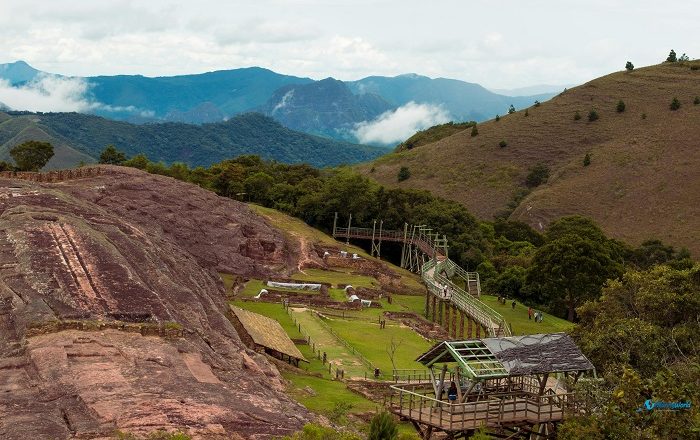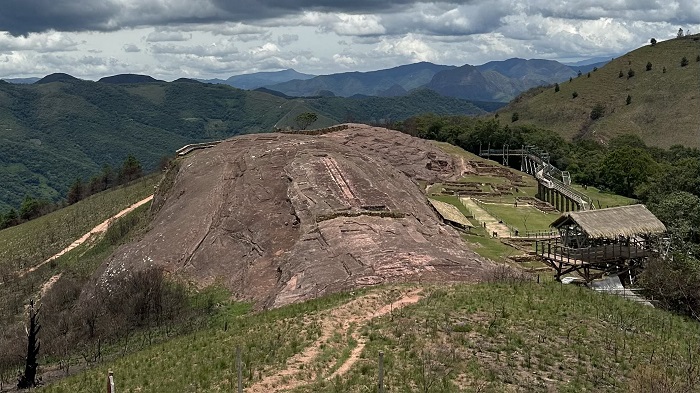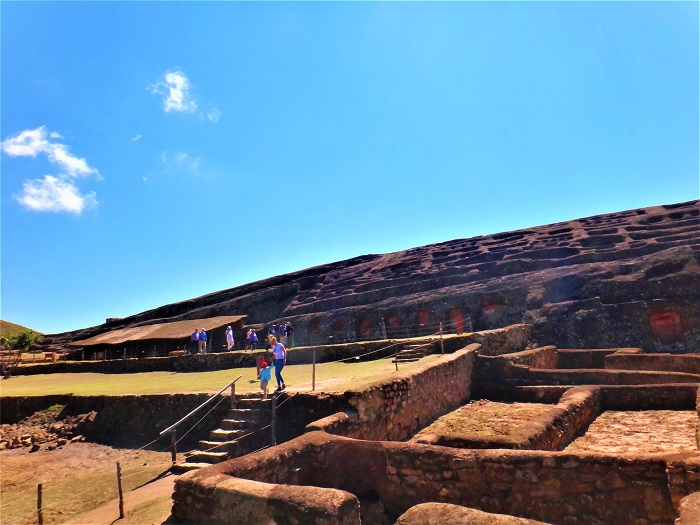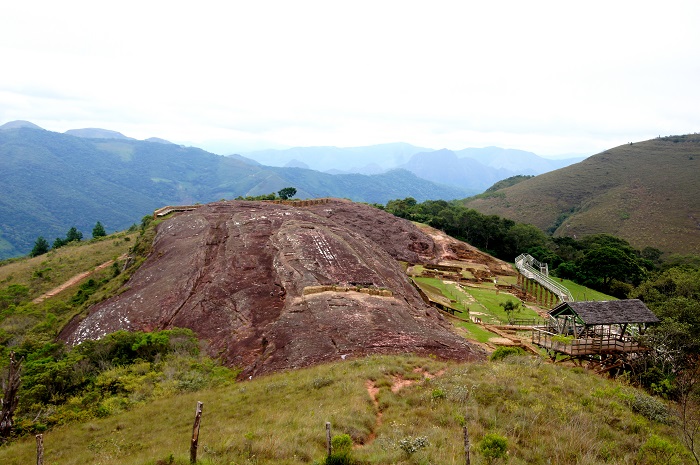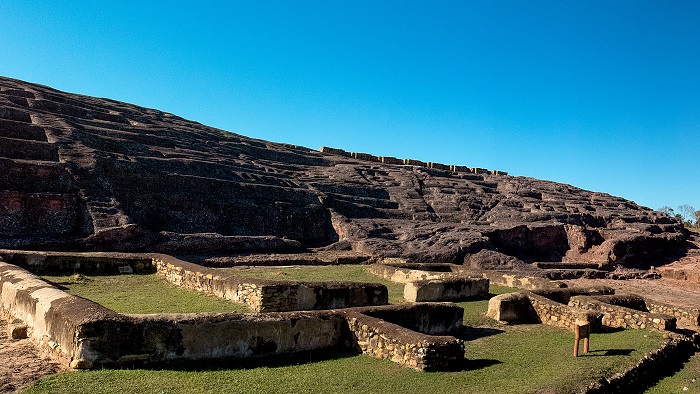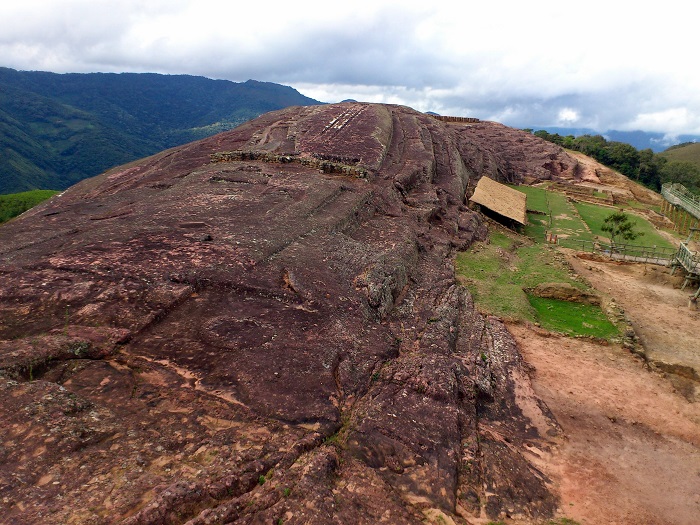El Fuerte de Samaipata, sometimes simply referred to as El Fuerte, is an ancient archaeological site that holds deep historical and cultural significance, located in the eastern foothills of the Bolivian Andes, and more precisely in the southern part of the Florida Province, in the eastern part of the Santa Cruz Department, within central-southern part of the Plurinational State of Bolivia. As the site is perched at an altitude of approximately 1,950 m (6,400 ft), it overlooks the lush valleys of Santa Cruz and it blends history, mystery, and breathtaking scenery in one remarkable location.

As the name “El Fuerte” which means “The Fortress” would suggest a sort of fortification, its purpose though serves far beyond a military defense, since this enormous center was used mainly for ceremonial purposes. The site is tunneled out of a monster sandstone rock which was built by the pre-Incan society known as the Chané civilization between the years 300 and 800 AD.
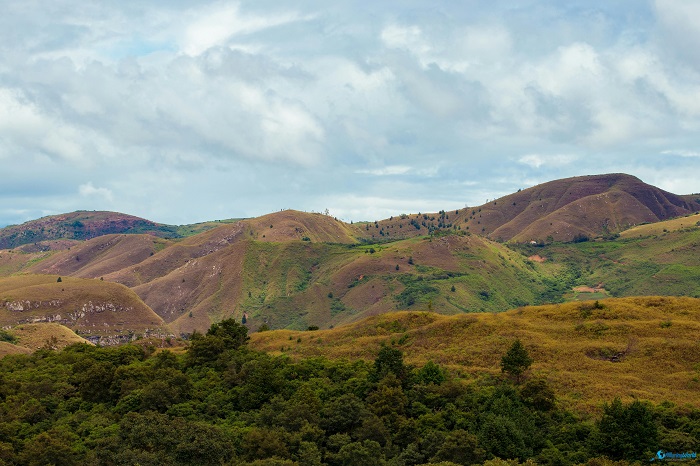
The Inca people worked on elaborate geometric designs, benches, and channels in the rock so that they could utilize it as religious and sacred grounds, however, it was later, during the 15th century when the Inca culture spread to the region and the place became an important administrative and ceremonial site. As the Spaniards arrived during the 16th century and discovered it, they misconceived it as a fort, thus earning it the name that it goes by today.

The site was constructed mainly through digging directly into the rock which was a feat that required exceptionally refined workmanship and equipment, and as most of the materials that were used in the construction were sandstone, the structure was also complemented by adobe and other stone masonry buildings. The site contains a large ceremonial platform, enigmatic zoomorphic and geometric carvings, and channels that may have been utilized for ritual or water control purposes. Surrounding the site are numerous Incan and pre-Incan settlements which are nowadays in ruins like terraced farmlands and dwellings.
By the time the Spanish rediscovered El Fuerte in the late 16th century, sadly the site had been already extensively damaged, possibly from fighting with the invading Incas and by natural erosion, but by the time the Spanish established their presence in the region, the site was already abandoned. Sadly, nature ran its course for centuries, as dense foliage engulfed its once-sacred carvings and structures.
El Fuerte de Samaipata is now a major archaeological and tourist attraction, offering insights into the rich pre-Columbian past of Bolivia. It has been a UNESCO World Heritage Site since its inscription in 1998, and nowadays this interesting archaeological site functions as a cultural monument, which is seen by historians, archaeologists, and tourists eager to uncover its mysteries. The rock carvings can be toured, and their significance in terms of history can be studied, with tourists also able to view the panoramic view of the surrounding valleys and mountains.
This ancient site can be reached on a scenic drive from the town of Samaipata, which is 120 km (75 mi) from Santa Cruz, the administrative capital. Perhaps the best time to visit it is from May to September because between these months there is clear weather and temperate conditions of the dry season making it for a pleasant visit. Guided tours with historical explanations serve to make this outstanding site even more interesting and intriguing even to those who are not very keen on archaeology or Incan history.
In short, El Fuerte de Samaipata remains a place of wonder as it blends the religious and architectural skill of ancient peoples with the stark natural beauty of the Andean foothills of Bolivia, and its unresolved enigma continues to intrigue all who undertake the pilgrimage.

